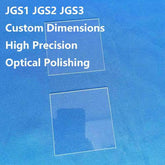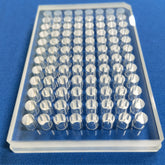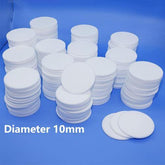Why ultraviolet light can’t pass through ordinary glass, but can through quartz glass?
- Basic properties of ultraviolet light
Ultraviolet light is the part of the electromagnetic spectrum between visible light and X-rays, and its wavelength is usually between 10 nm and 400 nm. Ultraviolet light can be further divided into near ultraviolet (UVA, 320-400 nm), middle ultraviolet (UVB, 280-320 nm), and far ultraviolet (UVC, 100-280 nm) based on its wavelength.
- Interaction of ultraviolet light with materials
When ultraviolet light hits the material, reflection, absorption and transmission occur. Absorption means that ultraviolet light is absorbed by the atoms or molecules of the material, while transmission refers that ultraviolet light passes through the material without being absorbed. The ultraviolet permeability of materials depends on its electronic structure and molecular bonding state.
- Interaction of general glass with ultraviolet light
General glass (Soda-lime Glass) is mainly composed of silica and various metal oxides, and there are a large number of electronic configurations that can absorb ultraviolet photons in its structure. In particular, these electron configurations will be excited in ultraviolet light bond, thus absorbing more ultraviolet energy. Therefore, the transmission of general glass to ultraviolet light is very low, especially to the UVC and UVB.
- Interaction of quartz glass with ultraviolet light
The main component of quartz glass (fused silica, or called quartz) is high-purity silicon dioxide, whose molecular structure results in a high transmittance to ultraviolet light. Because there are no impurities that can absorb ultraviolet energy in quartz glass, a wide range of ultraviolet wavelengths, including UVC and UVB, can effectively pass through it.

- Material composition
- Impurity content: Impurities in generalglass such as iron, sodium, calcium, can capture ultraviolet rays, resulting in increased absorption.
- Silica structure: Quartz glass is composed of a single component of pure silicon structure, which has good transmission under the ultraviolet spectrum.
- Manufacturing process of materials
General glass is more likely to incorporate impurities in the manufacturing process, while the production of quartz glass requires special purification technology to maintain its high transmission.
- Physical properties of materials
- Refractive Index: Refractive index of amaterial affects the reflectivity of light at the material interface and further affects the transmittance.
- Crystal structure: Generalglass is amorphous material, while quartz glass can be single crystal or polycrystalline, and its structure determines its ability to ultraviolet light transmission.

In essence, the difference in ultraviolet transmission between general glass and quartz glass is attributed to the difference in the composition and molecular structure of the material, among which various impurities in general glass are one of the main factors affecting its ultraviolet transmission performance. Because of its relatively pure silicon-based structure, quartz glass with high ultraviolet transmission has been used frequently in many occasions where ultraviolet penetration is required, such as the shell of ultraviolet disinfection lamp.






